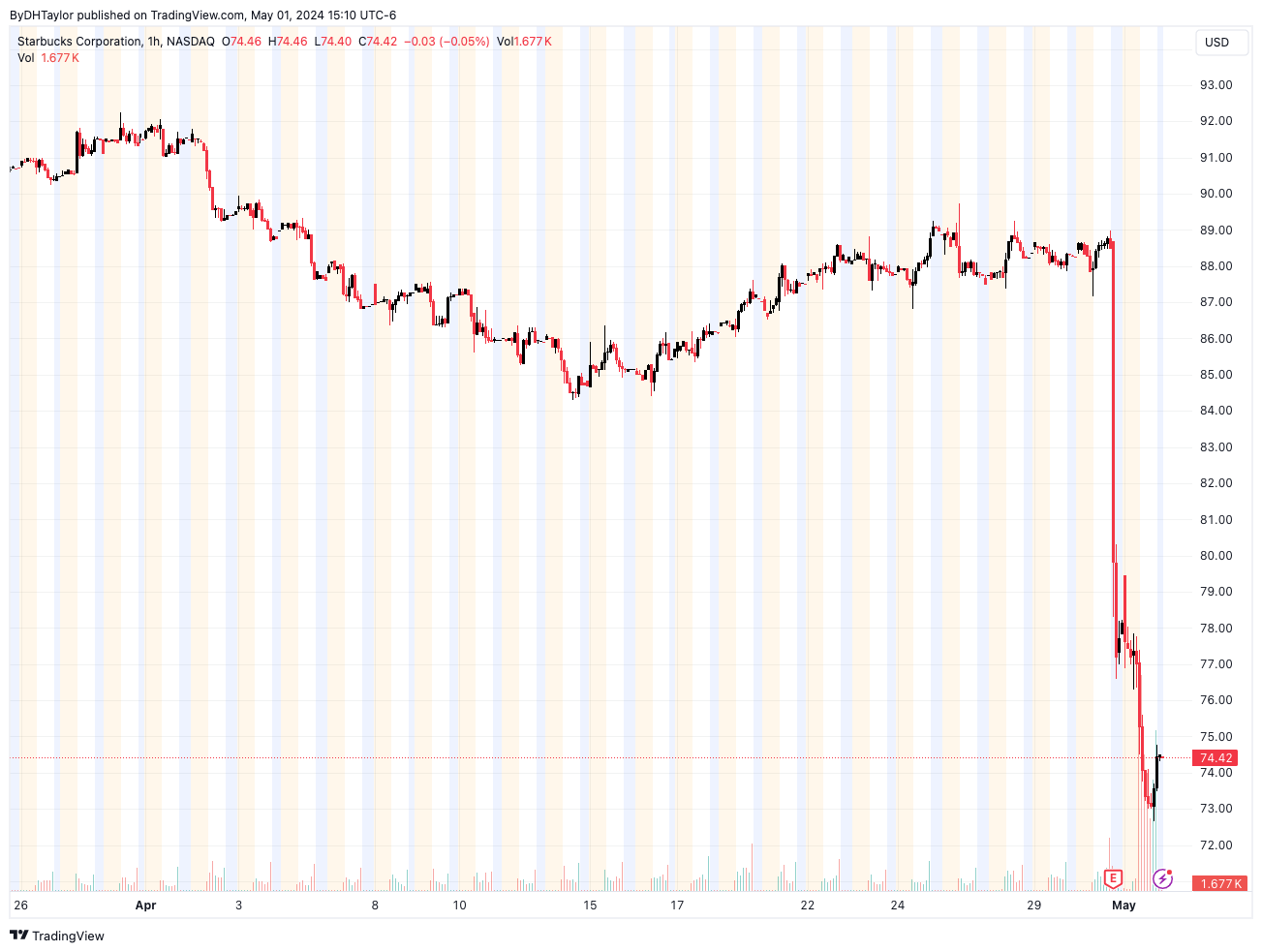The Fed Leaves Interest Rates Alone - What is next for the stock market
Widely expected, the Fed left interest rates alone. Initially, stocks rallied but then moved back downward. What will happen next for the stock market?
The Federal Reserve concluded its meeting on interest rates today. As widely expected, there were no moves. Initially, the stock market spiked higher, but then sold back down to the opening levels.
The stock market has been slowly grinding lower. Consumer spending is starting to move sideways after lifting upward for some months. Since the rate of growth in incomes and expenditures is leveling out, the effects will be a lower economic expansion rate. We are already seeing this via as just witnessed by GDP last week. However, something else just hit the wires that should be a huge wakeup call for investors: Starbucks, a bastion of discretionary expenditures, is seeing decreasing foot traffic and revenues. They missed on both revenue & earnings expectations because of this. The increased interest rate levels is having an effect on the limited incomes for consumers, and the evidence is showing up.
The Condition of the Consumer
The above picture encapsulates what I have been thinking for some time. Starbucks - SBUX stock, released its financials for Q1 2024. They missed on both revenue and earnings. And, guidance was not rosy to make up for the difference. The bottom line is that foot traffic is in decline at stores.
Higher interest rates are affecting consumers. Economic data, just last week, showed an economy that is starting to become sluggish. The higher interest rates that the Fed are imposing on the economy are to combat price pressures. While the initial spike higher in inflation has abated, inflation data is not falling down fast enough to give the Fed confidence that inflation will hit the Fed’s target 2.00% level. The consequences are that consumers are tightening their expenditures for their beloved Orange Mocha Frappuccinos.
This is the first real sign of what to expect. Consumers are going to continue to entrench. Companies will start to take action with lower revenues on the consumer level. That translates into an unemployment rate that will start to increase as aggregate demand from the consumer contracts from having to pay higher levels of their disposable income to service credit card debt.
Lower Revenues for Companies - Lower Profits & Then Lower Stock Prices
Above, SPY chart on a weekly basis, you can see a solid move upward from expectations that the Fed had contained inflation and next they would be able to lower interest rates. From there, expectations were that the economy could land softly and then continue right along. SPY stock kept flying higher with this expectation. But, the damage is starting to happen with higher interest rates - as you can see from what just happened to SBUX stock.
I just do not see continued expansion in personal incomes simply because the unemployment rate is so low - sitting at 3.82% which is well below historically perceived levels of ‘full employment’. We used to consider 5.00% full employment. Then we rationalized 4.5% as full employment.
But, with non-farm payrolls at historically high levels, there simply is not enough individuals remaining to be added to company payrolls - not to mention the lack of catalyst to do so as interest rates are restrictive. That means less growth for employment and incomes, which translates into less revenue for businesses.
US 10 Year Treasury Yield
As can be seen, interest rates have gone higher in a sharp move upward. My thinking has been the same that we have probably seen the high in the US 10 Year Treasury Yield. From here, inflation will likely start to trend lower to the 2.00% target rate of the Federal Reserve. But, there is a price to pay for the ultra-high levels of interest rates, and consumer expenditures is the first place to see it.
The eventuality is that the interest rate levels will ultimately be too restrictive on an economy that is already running at full speed. Look for more and more companies to start posting less-than anticipated revenues and profits. This is driven by the fact that consumers’ incomes are finite and the heightened interest rates means increased expenses for interest rate payments to debts. New loans for cars and additional increases for credit cards will cease as consumers entrench and repair their finances.
As more and more consumers spend less and less at companies such as Starbucks & Amazon.com, the ripple effects reverberate throughout the economy. There will not necessarily be a large move at first, but a continuously increasing pace. Economic growth may not reach the level that would be considered a recession - GDP just printed 5.486% year-over-year growth. But, a move lower in economic growth to 2.50% year-over-year growth would be significant and have very large ramifications for the stock market.
Eventually, the Federal Reserve will able to lower interest rates once inflation starts to trend downward. Inflation levels are likely to start that decline rapidly as consumption rates decline. Then, the Fed can move rates to an accommodative position. However, how much damage would have been done by then?
I am continually positioning myself that interest rates have peaked and I will be getting into TLT stock since the Fed will eventually lower interest rates. At the same time, in this cycle, the stock market has peaked, in my opinion. When the Fed does move to lower interest rates, the moves may be large and pronounced. So, too, will my profits.





